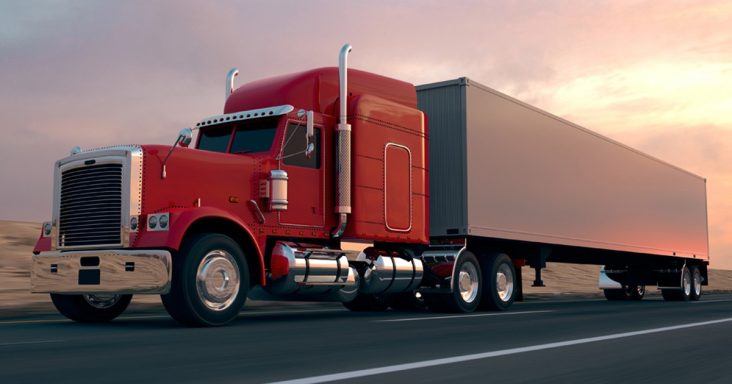Diesel to power 80% of big rigs by 2030, industry leader says
by October 29, 2019 2:28 pm 5,111 views

Diesel-powered big rigs are expected to account for the majority of the commercial fleet in the United States over the next decade as newer diesel engines release fewer emissions.
Vehicles powered by rechargeable battery packs and compressed natural gas (CNG) continue to receive plenty of attention, and zero or low emissions have been important factors in their use. However, diesel engines in big rigs newer than model year 2010 have nearly zero emissions, said Allen Schaeffer, executive director of Diesel Technology Forum. In a recent webinar, Schaeffer and Casey Selecman, senior manager at IHS Markit, released new data on diesel technology and its use in the United States. Selecman also provided data on the use of diesel technology through 2030.
The U.S. commercial fleet includes 14 million vehicles, and 75% are powered by diesel engines. And, 43% are using the newest generation of diesel technology, Schaeffer said. This is an increase of 6.8%, from 2018. Also, 97% of class 8 trucks, or the largest truck class, are powered by diesel engines, and 44% are using the newest generation of diesel technology. This is an 7.3% increase from 2018, he said.
Indiana has the highest percentage of trucks with the newest diesel technology at 65%. Oklahoma is second with 56%. In the south-central region, which includes Arkansas, 49% of the trucks have the newest diesel technology.
Nitrogen oxides (NOx) and particulate matter emissions have decreased 98% in heavy-duty trucks powered by diesel engines when comparing those in 1988 with the trucks with the newest diesel technology, Selecman said. He explained that as more trucks with newer technology become a part of the commercial vehicle fleet, the benefits will continue to rise. Also, the newer technology has allowed for fuel efficiency improvements from 3% to 4%, he said. The newer diesel technology has complemented other improvements to trucks such as improved aerodynamics.
Between 2010 and 2030, the share of commercial vehicles that will be powered by diesel engines is expected to fall by about 5%. The share for class 4 to 8 trucks is expected to fall to 80% by 2030. Over the same period, the average fuel economy of class 8 trucks is projected to rise from 6 miles per gallon to nearly 10 miles per gallon.
“If somebody told me a few years ago that a class 8 truck would get 10 miles per gallon I would’ve told them that they were crazy,” Selecman said. “But there is a lot of activity in this space, and the technology is growing and moving so fast that there are actually vehicles on the road, real vehicles in use, that are getting over 10 miles per gallon today.”
Between 2011 and 2018, class 3 to 8 trucks have saved 126 million tons of carbon dioxide (CO2) emissions and 12.4 billion gallons of fuel as a result of the new technology in diesel engines, he said. Between 2011 and 2030, the savings is projected to increase to 1.3 billion tons of CO2 and 130 billion gallons of fuel, he added. Also, from 2007 to 2030, he projected a NOx reduction of 73 million tons.
Selecman explained the reductions would be like removing 276 million light-duty vehicles from the road for a year or making them zero-emissions electric vehicles. Or, like removing NOx emissions from all light-duty for 26 years and particulate matter emissions for 130 years. Nearly all of the houses in the United States could be powered for one year on the expected fuel savings through 2030, he said.
In a question and answer session, Schaeffer explained the acceptance of biodiesel and how the availability of the fuel and the familiarity of it have affected its use. Also, the price of diesel plays a part in how fleets determine its use. “There have been tremendous advancements in the quality of biodiesel fuels just generally in the last 10 years that I hope that folks recognize that those great strides have been made,” Schaeffer said. “We have really high quality product out there that many fleets are using every day.
“We also have the second generation of advanced renewable biofuels that are being widely used in California,” he said. “They also offer some really unique advantages for the fleets that can get their hands on those and can use those.”
Selecman compared the use of biodiesel to how light-duty vehicles use ethanol and how the capacity for biodiesel isn’t great enough to reach the level of demand.
About 1,000 commercial vehicles in operation are electric, 55,000 run on compressed natural gas and 3 million are powered by gas, according to data provided by IHS Markit.
In an alternative fuels report on Tuesday (Oct. 29), U.S. and Canadian class 8 natural gas truck retail sales rose 27% in the first eight months of 2019, from the same period in 2018, according to ACT Research.
“Bucking the early decline pattern of the past few years, cumulative sales for the first eight months of 2019 appear to be gaining ground, with sales of natural-gas powered vehicles on an overall upward trajectory,” said Steve Tam, vice president at ACT Research. “That said and based on news released in the popular press, natural gas vehicle purchases continued to be dominated by the refuse fleets, as well as transit and school bus operators. Among truckers, it appears as though the majority of incremental volume came from current natural gas vehicle users replacing units or increasing their number.”
Overall the number of charging stations that are operational has increased, with the exception of natural gas, which has fallen. However, it has been expanding with regard to existing and planned private heavy-duty CNG stations, Tam said. “Regarding electric commercial vehicles, right now we’re witnessing a tug-of-war between fuel-cell and battery technology investment in the class 8 over-the-road market, and it’s way too early for us to call a winner.”
